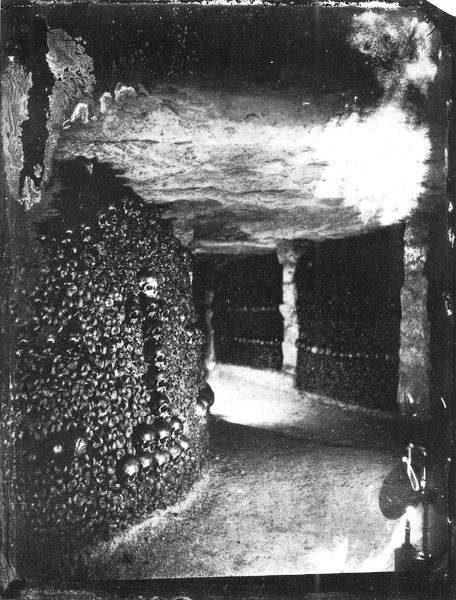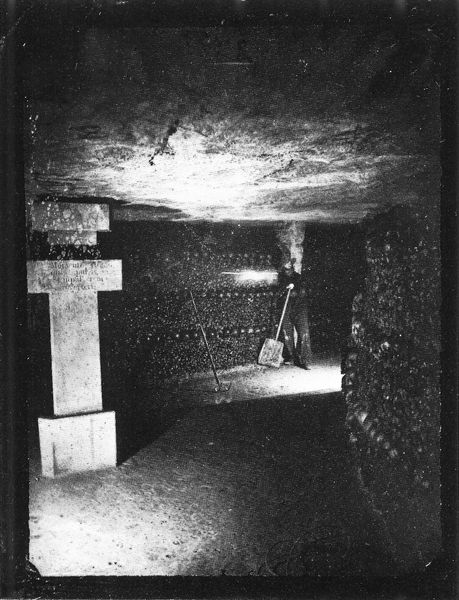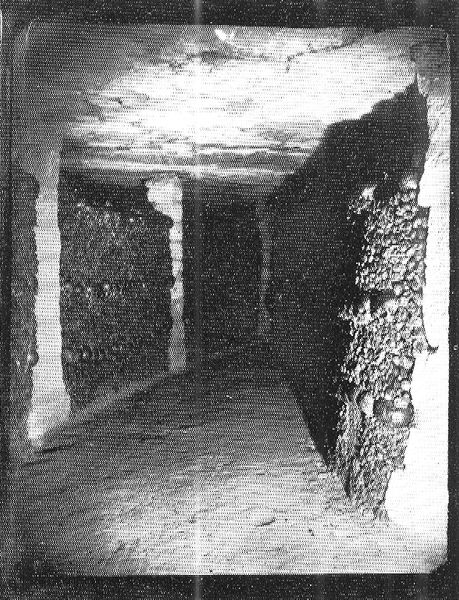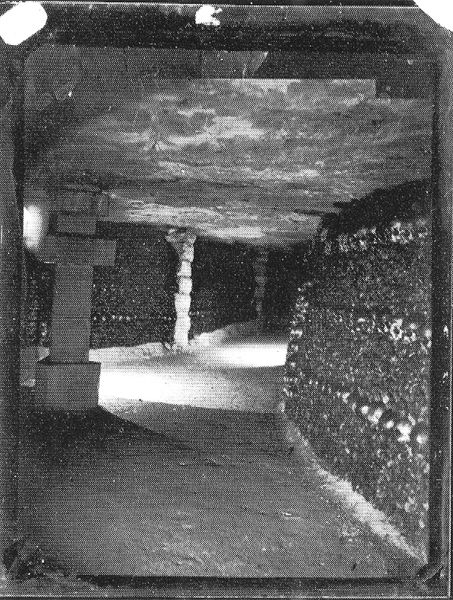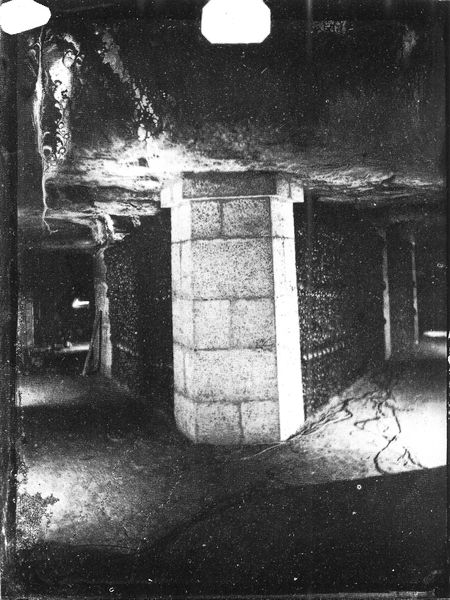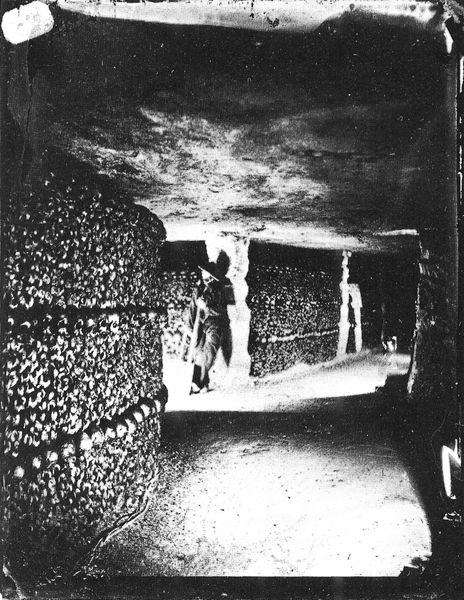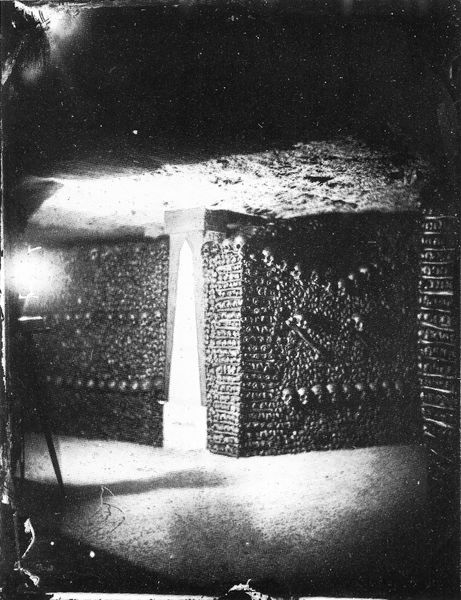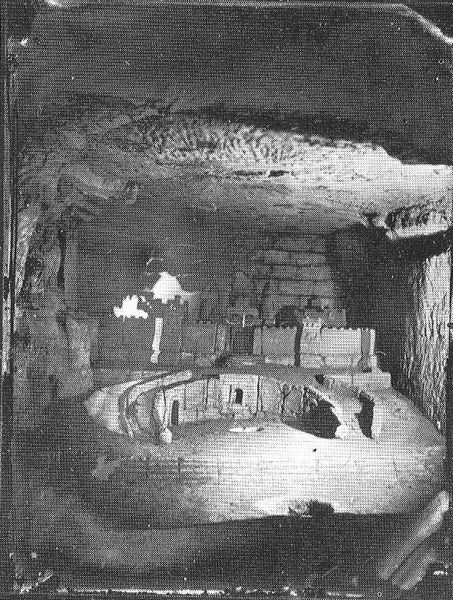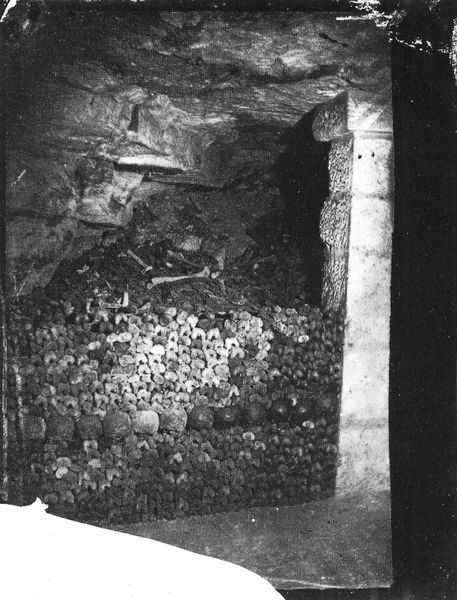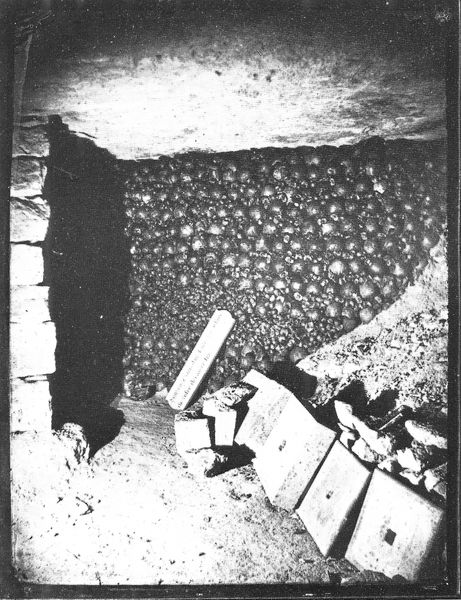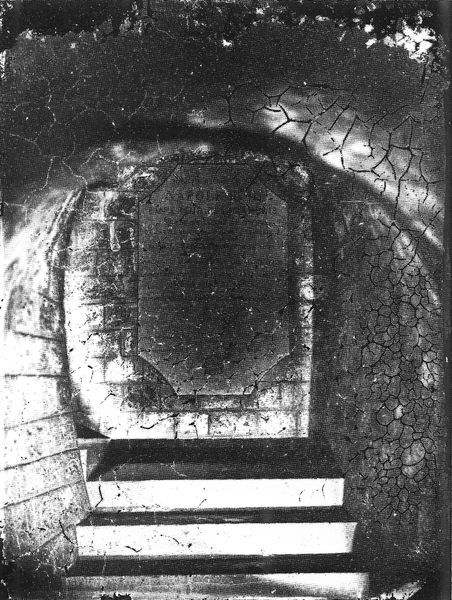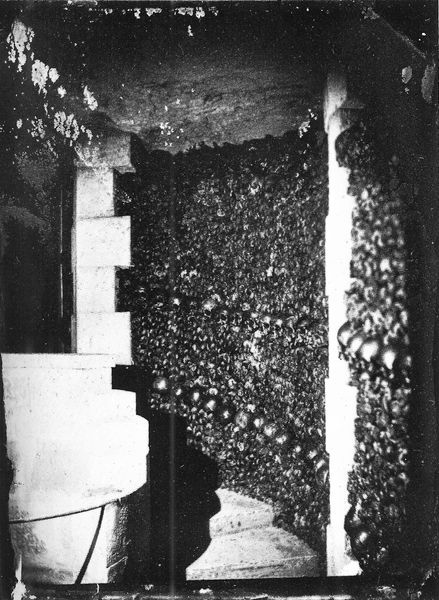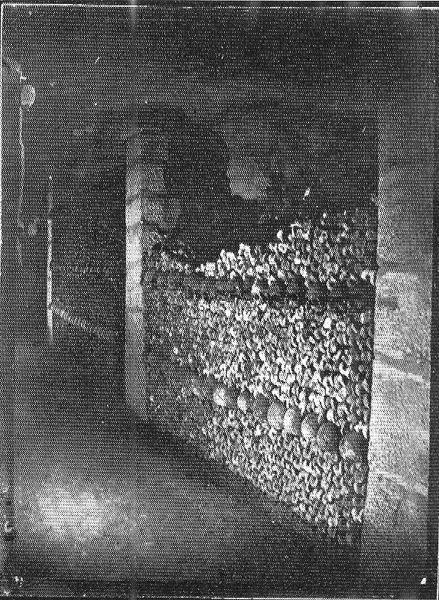
Copyright: Public domain
Curator: What a haunting photograph. There’s something almost apocalyptic about this 1861 gelatin silver print entitled "Catacombes de Paris," by Félix Nadar. Editor: My initial reaction is pure claustrophobia. It feels as if the weight of history, or perhaps a more literal weight of the earth, is pressing down. The contrast is striking, but what's most unsettling are the blurred shapes; the stark geometric forms looming within an uncertain space. Curator: That uncertainty, that murkiness, is what holds so much symbolic power. This photograph captures the Paris Catacombs, an ossuary holding the remains of millions. Light and shadow battle here; there’s a literal struggle of enlightenment piercing the darkness, revealing the physical bones. These skeletal remains act as symbols and tangible records of entire segments of Paris society. Editor: Right, but consider the social context of these bones, Curator. This wasn't simply a respectful relocation. The catacombs became necessary due to overflowing cemeteries and sanitation concerns that disproportionately impacted working-class communities in Paris. It exposes class disparities even in death. This also challenges our sentimental attachment to romantic ruins. We romanticize them in paintings, yes, but the political backdrop shifts our gaze. Curator: I agree to a point. Yet the aesthetic itself is potent; it embodies a certain historical drama and mystery, echoing a Romantic sensibility. The photographer uses a visual language steeped in symbolism – a subterranean world usually reserved for initiates, brought into the light, documented. But consider, Editor, it's not simply about bones; they represent human lives, individual stories merging into collective fate, an inevitable journey we all share. Editor: Fair enough, I appreciate the visual poetry, the allegorical intent; however, the composition—that stark lighting exposing these piles, one on the left as almost like a solid block—becomes a commentary, a stark portrayal of social neglect and ultimately speaks to an unequal relationship between different populations. Curator: Still, its power resides in visualizing a profound human reality: that we all end up as bone, stripped of earthly status. It allows for contemplation and ultimately connects with traditions that predate modern capitalism. Nadar's image, despite your critiques, Editor, preserves both a document of human bones, and an icon that captures and transforms our cultural consciousness about the inescapable destiny we all meet. Editor: Indeed, that image pushes viewers, despite any contextual consideration, into self-reflection. Very evocative, and that’s quite the accomplishment for a photo taken in what amounts to a mass graveyard.
Comments
No comments
Be the first to comment and join the conversation on the ultimate creative platform.
